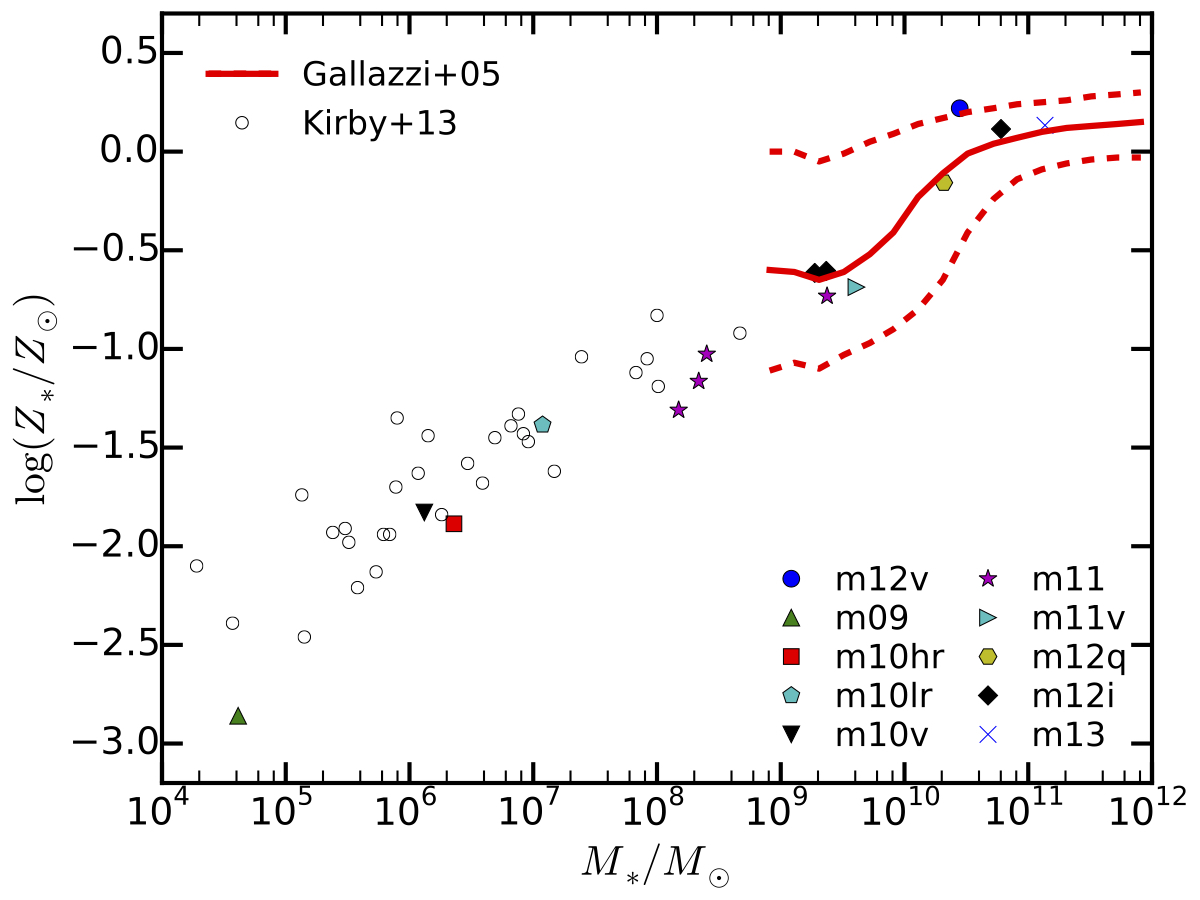Galactic chemical evolution
Chemical enrichment is one of the most fundamental galaxy properties. Galactic chemical evolution studies important questions with respect to the heavy elements (i.e. metals) in galaxies:
- How many metals are there in galaxies of different mass over cosmic time?
- What are the enrichment histories of galaxies?
- How are the metals distributed, mixed, and re-distributed among different phases and regions in a galaxy?
- How well do metals trace the formation histories of galaxies?
- And many more...
The galaxy mass‒metallicity relation (MZR)

Figure: The stellar MZR at z = 0. Our simulations (color symbols) agree reasonably well with observations (from Ma et al. 2016a).
We predict the gas-phase and stellar MZRs and their evolution from z ~ 0‒6 using the FIRE simulations (Ma et al. 2016a, MNRAS, 456, 2140). These results are widely adopted for modeling the population of stellar-mass black hole binaries detected by gravitational-wave observatories
(e.g. LIGO).
In my paper and a follow-up paper (Muratov et al. 2017, MNRAS, 468, 4170), collaborators and I show the fraction of metals in different phases [stars, ISM, CGM (cold, warm, hot)] of a galaxy as a function of mass and redshift.
Gas-phase metallicity gradients
Movie: Build-up of a negative metallicity gradient in a present-day Milky Way-mass star-forming galaxy (from Ma et al. 2017a).
Local ~L* star-forming galaxies typically have negative gas-phase metallicity gradients: the inner radii are more metal-enriched than the outer radii. However, observations of galaxies
at z > 0 reveal a diverse gas-phase metallicity gradients, from positive, flat, to negative.
Using over 30 simulations from the FIRE project, I show that we are able to reproduce the observed diversity of the gas-phase metallicity gradients and their correlation with kinematic properties at z = 0.5‒3. We argue that this diversity is driven by stellar feedback on time-scales of a few 100 Myr, meaning that the observed metallicity gradients reflect the instantaneous state of a galaxy during a starburst episode (Ma et al. 2017a, MNRAS, 466, 4780; see also the movie above).
In a companion paper (Ma et al. 2017b), we stud the formation history, disk structure, and stellar age and metallicity distribution in Milky Way-mass galaxies, see more details here.
Data release: In Ma et al. (2017a), we show the relation between gas-phase metallicity gradient and stellar mass, specific star formation rate (sSFR), and kinematic properties. To expedite the comparison with future observations and theoretical predictions, we provide all relevant data from our simulations in Tables A1 of our paper. Click here to obtain a machine-readable version of this table.
Back to research